No Longer Vanilla
For decades the midsize family sedan commanded the largest share of the U.S. car market. And for the past 15 years, the Toyota Camry has ruled the midsize roost, a position it continues to hold through the first five months of 2018. Included in the Camry’s yearly sales number since 2006 is the Toyota Camry Hybrid.
But the midsize car dominance began waning three years ago. The family hauler replacement choice is the compact crossover sport utility. The children of baby boomers are driving this surge, but that doesn’t mean the midsize sedan is an abandoned child—more than 1.7 million were sold last year. And if you are one who is going to stay the course and are considering a 2018 midsizer, then why not invest a few extra dollars for the all-new 2018 Toyota Camry Hybrid?
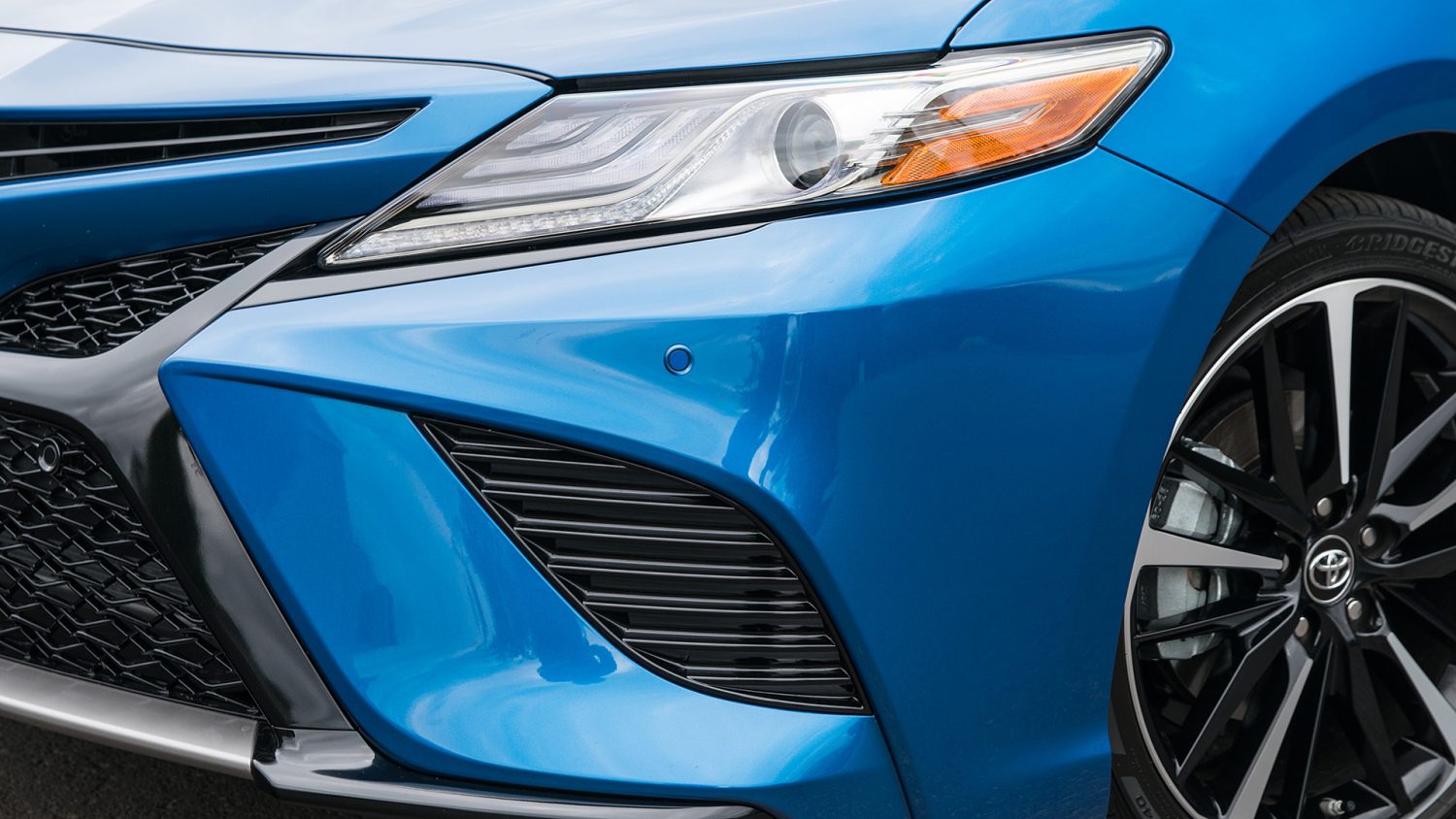
The base hybrid-powered 2018 Toyota Camry LE offers a sparkling EPA rating of 51 mpg city and 53 mpg highway. That makes it America’s most fuel-efficient midsize hybrid sedan. In an era when one storm—meteorological or political—could again send gas prices toward $4 per gallon (alert, just saw regular at $4.05 today in California—ed), the hybrid option on the Camry seems to me a common sense choice, even though so far this year only six percent of Camry buyers opted for it.
In addition to the LE priced starting at $28,685 (including destination charges), buyers can choose an SE model with a sticker price of $30,385 or the top-of-the-line XLE starting at $31,135. Fuel economy numbers for the SE and XLE come in at 44 mpg city and 47 mpg highway. Yes, those numbers are less than the base model because the LE employs a lithium-ion battery rather than a nickle-metal hydride electric power source, plus it offers less standard equipment and has smaller tires.
Styling: Is This Really a Camry?
Past Camrys were not unattractive, but words like bold or expressive were never used to describe their styling; the word vanilla was most often used. The impression was Palm Springs-retirees as the target customer. Not anymore.
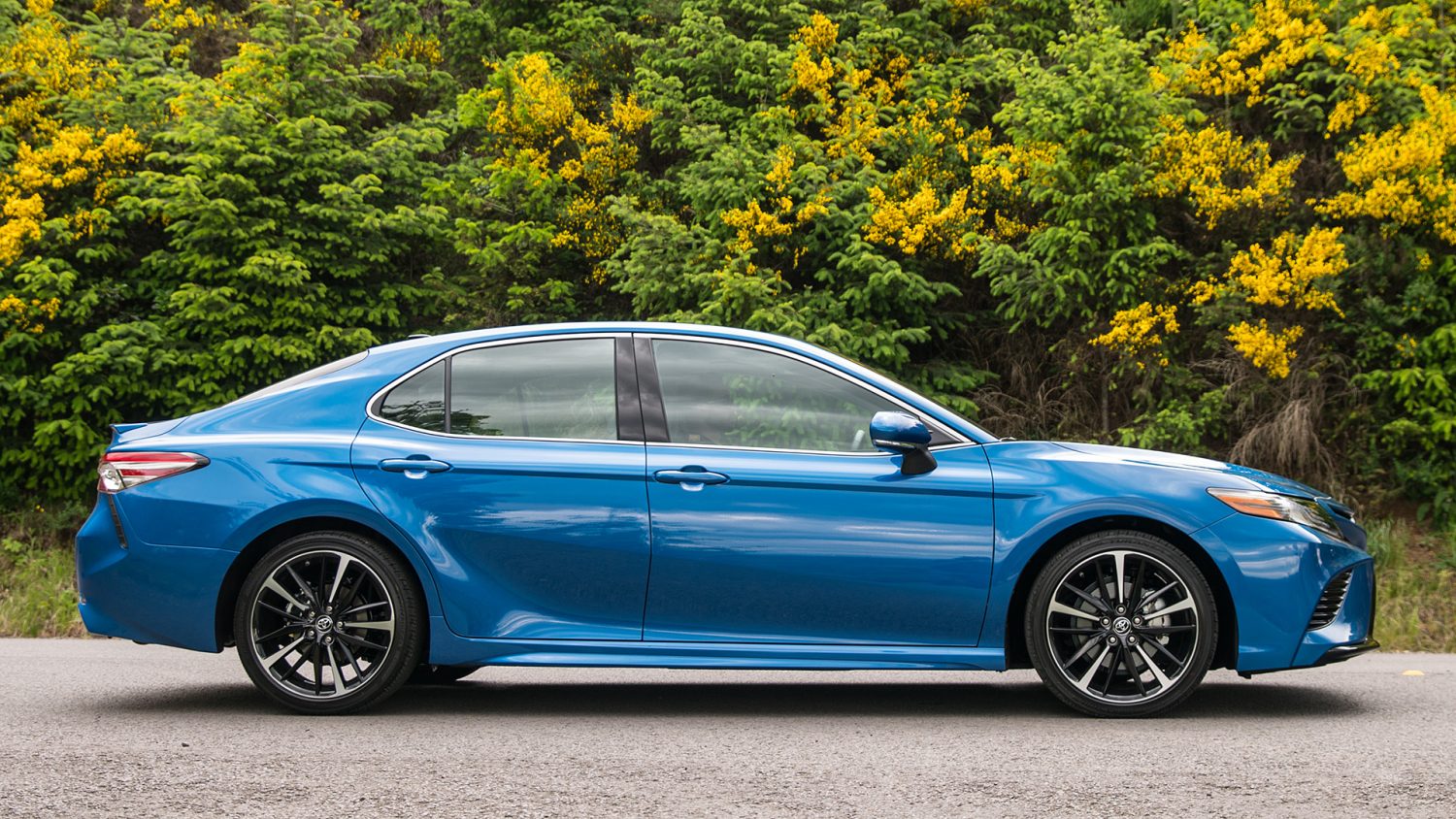
Tightly drawn and crisply rendered, the 2018 Toyota Camry Hybrid has an in-your-face large grille complemented by slim headlights that sweep into the fenders. Camry’s two-part grille has what Toyota terms “flowing” lines, with a large Toyota badge at the center, tinted blue on hybrid models. Our XLE hybrid was distinctive with a mesh grille insert.
A sharp body crease that begins at the muscular front fenders sweeps across the doors and rear quarter panels. Slightly flared doorsills suggest a road-hugging stance. Around back, a small lip spoiler and four chrome tailpipes gave a hint that our test driver was more than a standard hybrid.
What About The Cabin?
Open the doors and one might think Toyota borrowed a couple of interior designers from the company’s Lexus premium division. The cabin exudes the kind of quality and refinement that buyers of luxury cars are used to. The feeling and look inside is upscale with the integration of rich-looking soft-touch surfaces and upholstery.

Controls are large, easy to reach, easy to understand at a glance and are glove-friendly. Nestled between the three-dimensional Optitron gauges in the instrument panel is a 4.2-inch color screen. It displays a range of vehicle functions and coordinates with the multimedia system to display audio, navigation, warnings, and communications. The screen can also illustrate the flow of electric and gas power and can be adjusted to detail fuel-consumption data.

Four adults fit comfortably and, as with virtually every car in this class, three across in the rear seat means sitting shoulder-to-shoulder. If little ones are part of your family, front- and rear-facing child seats will fit in the back with ease.
Both battery packs are new and smaller than before, allowing them to be placed under the seat instead of in the trunk. The 2018 Camry hybrid has the same 15.1 cubic feet of trunk space as the gas-only car and has a full-size opening when the rear seats are folded.
No Lack Of Tech
The 2018 Toyota Camry Hybrid offers a standard convenience feature list and options that include virtually every infotainment and connectivity item buyers expect. Even the base LE is equipped with keyless ignition and entry, automatic headlights, heated exterior mirrors, full power accessories, cruise control, an eight-way power driver seat and dual-zone automatic climate control.
Our XLE hybrid was enhanced with a sunroof, adaptive headlights, leather upholstery and the optional Entune 3.0 infotainment package and its 8.0-inch touchscreen. Also included were three USB ports, a navigation system, nine-speaker JBL audio system and a long list of apps and features. While it lacks Apple CarPlay or Android Auto integration, it does offer Siri Eyes Free and Google voice control.
All Camrys come with a version of the Toyota Safety Sense package, which for the XLE included lane-keeping assist, adaptive cruise control, front automated emergency braking, blind-spot monitoring and rear cross-traffic alert with automated braking.
New Hybrid System and Vehicle Platform
With the new 2018 Toyota Camry Hybrid comes a new hybrid system, the new Toyota Hybrid System II. The engine is a 2.5-liter inline four-cylinder that has variable valve timing, runs on the Atkinson cycle and has a near-diesel 14.0:1 compression ratio. It also uses a new super lightweight 0w16 grade oil that further reduces internal friction and losses. Toyota touts greater than 40-percent thermal efficiency for the new engine.
By itself, the gas engine generates 176 horsepower (hp) and produces 163 pounds-feet (lb.-ft.) of torque over a wide range from 3,600 to 5,200 rpm. The electric motor makes 188 hp and 149 lb.-ft. for a total system power of 208 horsepower.
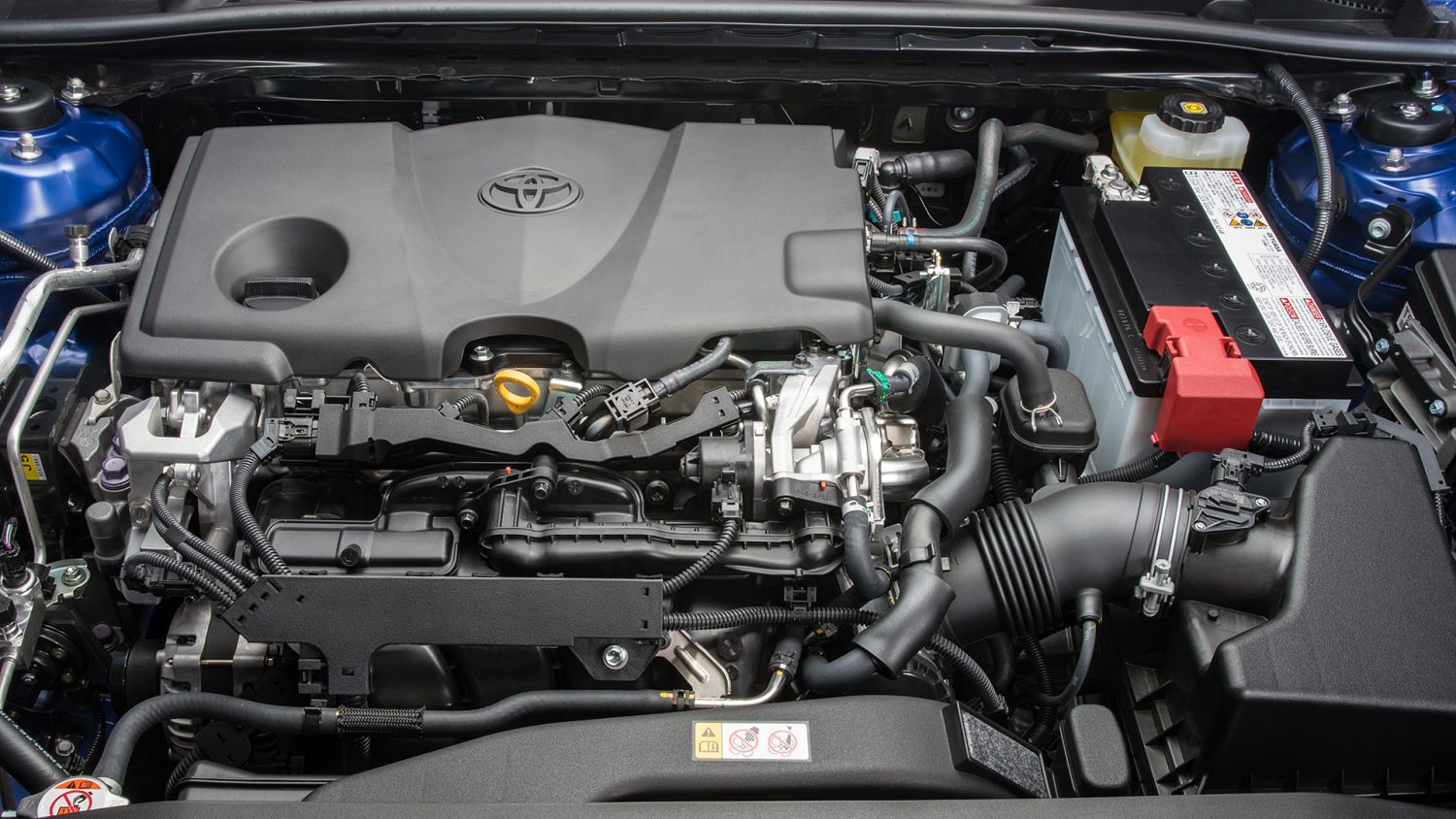
Power is routed through a continuously-variable transmission-like transmission with four drive modes—EV, Eco, Normal and Sport—each giving the car a different personality. Sport mode clearly opened everything up while Eco and Normal were just different enough to justify using each in certain situations.
Completing the system in our XLE was a 1.6-kWh sealed nickel-metal-hydride battery pack. Regenerative braking converts the electric motor to a generator that captures kinetic energy when coasting or the brake is applied, storing it in the hybrid battery pack.
This isn’t a decaf version of standard gasoline Camry. The Hybrid’s 0-to-60 mph sprint of 7.2 seconds is actually quicker than the regular four-cylinder car by a half second. That’s not pokey, and means it’s an admirable highway car with good passing power and on-ramp acceleration.
To go along with the new hybrid system, the 2018 Toyota Camry Hybrid is built on Toyota’s New Global Architecture (TNGA). It rides on a 2.0-inch-longer wheelbase and is about an inch and a half longer, an inch lower and three-quarters of an inch wider than last year’s model. The old car’s rear struts are replaced with a more sophisticated multilink setup that damps out bumps swiftly and smoothly.
Driving The 2018 Camry Hybrid
We gave the XLE Hybrid a shakedown in a variety of driving environments from back roads to highways to Interstate stop-and-go to in-town.
In the world of daily driving where the 2018 Toyota Camry Hybrid will live most of the time, I found it to be supple and as smooth as well-oiled ball bearings. The suspension soaked up the bumps of city streets with only a distant notice of their passage.
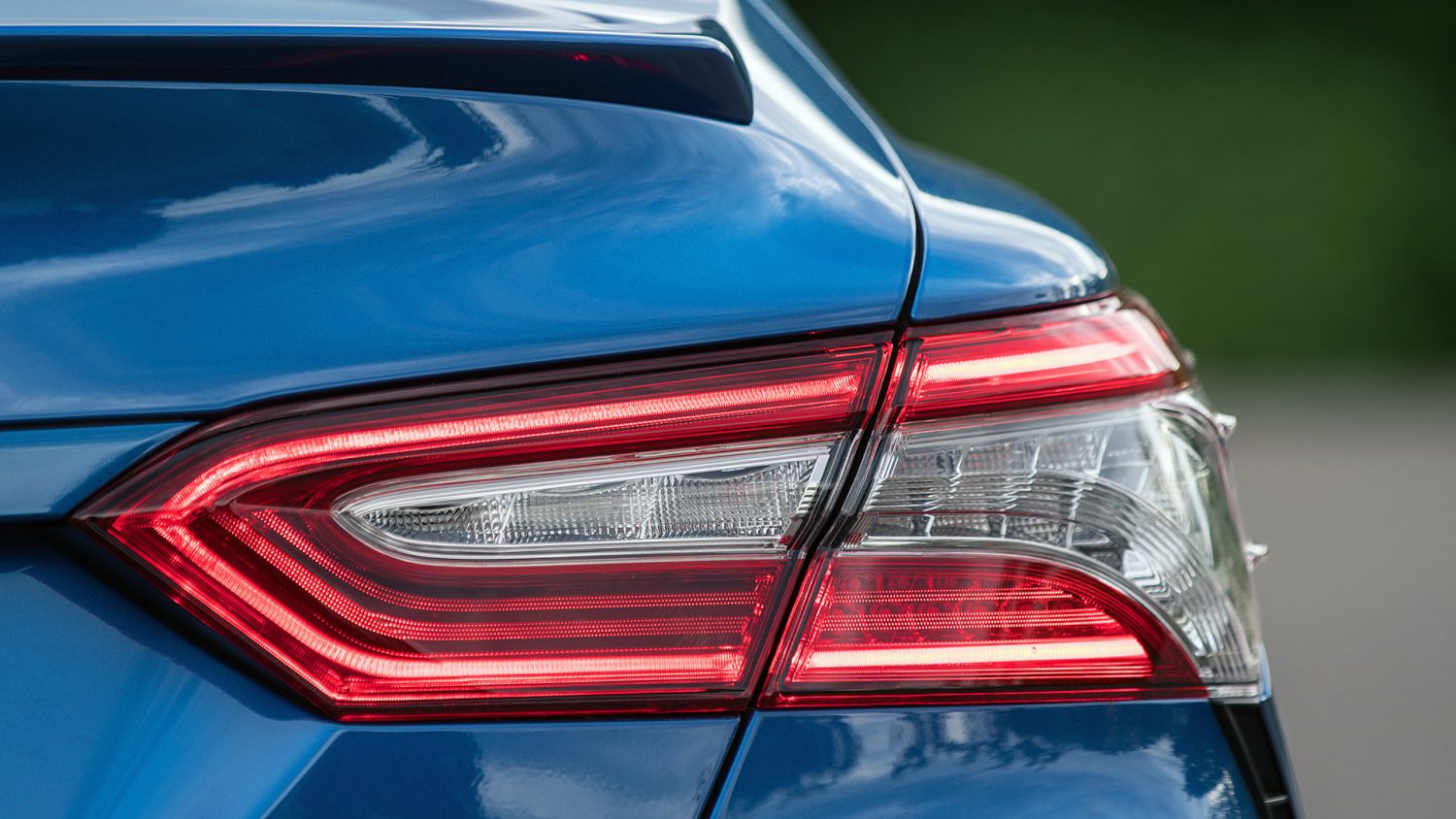
The transition from all-electric to gasoline engine was exceptionally smooth. And while I normally object to CVTs, this one was a dandy. It responded quickly and a manual mode enabled sifting through six simulated gear steps with the console-mounted shifter.
Driving on two-lane highways and freeways, the interior was as quiet as anything sold under Toyota’s upscale Lexus brand. That can be attributed to beefed-up window and door seals, outside mirrors reshaped to reduce wind turbulence and carpeting with more insulating material.
I really liked the confident grip feel of the thick leather-trimmed steering wheel. Steering felt predictable, and the XLE Hybrid accepted quick steering transitions with ease. The car felt just as composed taking curves as it did in a straight line. Body roll was well-controlled, and the extra chassis rigidity and suspension tuning gave the car the ability to tackle a twisting road with some zest.
My only compaint had to do with the brakes. At low speeds (under 10 mph), they were quite squishy and jerky. At normal speeds there was good pedal feel and the car stopped on the perverbial dime.
At the end of our week the trip meter registered 402 miles. Even with 62 miles of some entertaining driving, the instrument panel readout was 48.9 mpg. That’s a number that exceeds the EPA estimate, mainly because I was more judicious in managing fuel economy than the EPA’s protocols, and the EPA does not factor the Eco and EV modes in their fuel economy estimates.
The Midsize Hybrid Car For You?
The 2018 Toyota Camry Hybrid’s fuel economy and new personality are difficult to ignore, but it’s not the only kid on the block. Ford’s Fusion Hybrid has off and on nipped the Camry Hybrid’s heels for some time. It has sharp styling and its 44 mph highway is nothing to sneeze at.

If you want fuel economy and function, the Honda Accord Hybrid has my attention with mpg numbers of 50 city and 45 highway. Then there’s the reengineered Hyundai Sonata Hybrid that equals the Fusion Hybrid’s fuel economy with mature styling and the automaker’s flair for tons of standard equipment.
New hybrid car buyers with no attachment to a specific brand will have to spend some time to determine which of the above (or others below) is the best choice for them. It’s a no brainer for Toyota devotees, however. The Camry Hybrid’s new exterior and interior styling, lots of features, plenty of power to go along with the fuel economy makes it an easy choice.
Related Stories You Might Enjoy—The Midsize Competition
Road Test: 2018 Toyota RAV4 Hybrid
News: 2018 Ford Fusion Energi Gains Range & Tech
First Drive: 2018 Toyota Camry Hybrid
Comparison Test: 2017 Ford Fusion Hybrid & Energi
Road Test: 2017 Ford Fusion Energi
Flash Drive: 2017 Ford Fusion Energi
Road Test: 2017 Honda Accord Hybrid
Road Test: 2017 Hyundai Sonata Plug-in Hybrid
News: 2018 Hyundai Hybrids Bring on the Green
Comparison Test: 2017 Kia Optima Hybrid & Plug-in Hybrid
Disclosure:
Clean Fleet Report is loaned free test vehicles from automakers to evaluate, typically for a week at a time. Our road tests are based on this one-week drive of a new vehicle. Because of this we don’t address issues such as long-term reliability or total cost of ownership. In addition, we are often invited to manufacturer events highlighting new vehicles or technology. As part of these events we may be offered free transportation, lodging or meals. We do our best to present our unvarnished evaluations of vehicles and news irrespective of these inducements.
Our focus is on vehicles that offer the best fuel economy in their class, which leads us to emphasize electric cars, plug-in hybrids, hybrids and diesels. We also feature those efficient gas-powered vehicles that are among the top mpg vehicles in their class. In addition, we aim to offer reviews and news on advanced technology and the alternative fuel vehicle market. We welcome any feedback from vehicle owners and are dedicated to providing a forum for alternative viewpoints. Please let us know your views at publisher@cleanfleetreport.com.

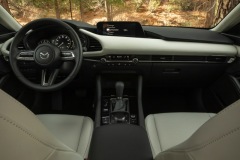
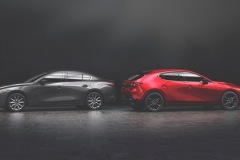
3 thoughts on “Road Test: 2018 Toyota Camry Hybrid XLE”